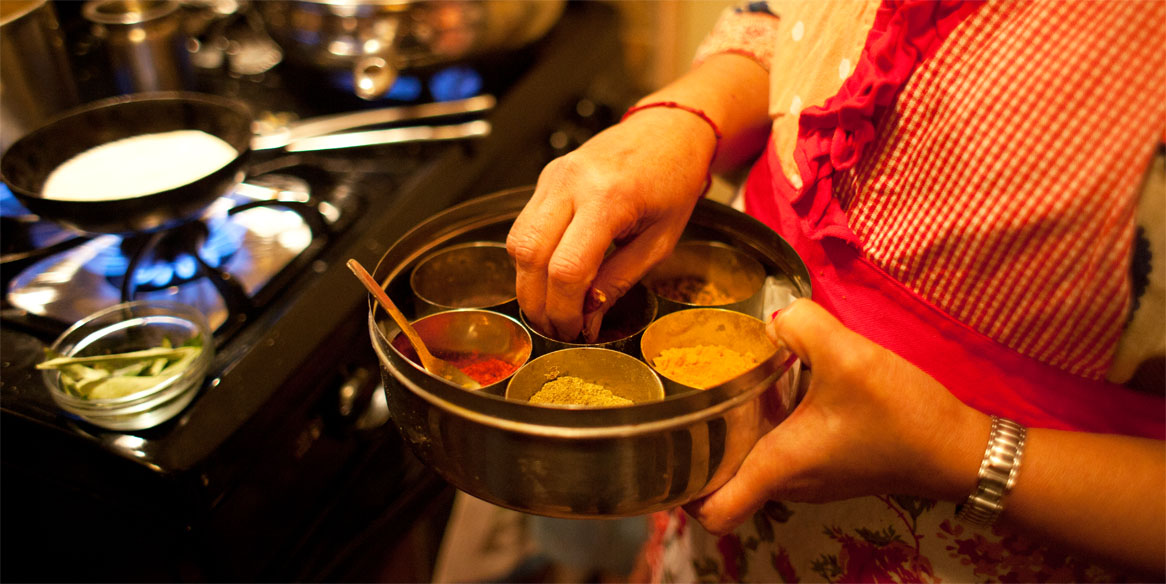
For Hindu people, food is closely interlinked with their religion. That is why, in a traditional Hindu home, the kitchen is considered holy. In fact, it is the holiest area in the house after the pooja room –a spiritual room where Hindus meditate and worship their God.
As the saying goes, ‘cleanliness is Godliness,’ which is perhaps one of the reasons why Hindu people work extremely hard to ensure that their kitchens represent a clean, peaceful haven. Step into a traditional Hindu kitchen and you’ll feel like you’ve been transported a million miles from the bustling –and at times manic – streets outside.
Here are some other interesting facts about traditional Hindu kitchens you may not know:
No Shoes Allowed
Strictly no footwear is allowed in the traditional Hindu kitchen. Shoes and sandals, in particular, are considered dirty and unclean because of the dust outdoors, or because they are made from the skin of animals that did not die naturally, which is against the Hindu religion. For this reason, many religious people will walk around in shoes made from plastic or from wood.
Floor Space
Not only do Hindus eat on the floor, they also cook on the floor, too. In the majority of traditional Hindu kitchens, the stove and other cooking utensils are placed on the floor. Whoever is cooking will either sit on the floor or on a very low stool.

Importance of Cleanliness
Because Hindus place such an importance on cleanliness, it is essential that the cook of the meal is from a good family. If she is not a member of the family, she will almost always be required to take a bath before coming into the kitchen to prepare and eat the food.
No Tasting
In some Hindu households, all the food preparation will be done in the early morning before everyone is awake and after the necessary cleansing rituals have been performed. Many Hindus believe that the deity should first sample the food; this is why many cooks will not sample the dishes while they are preparing it.
Food for Sacrifice
There are three categories of food which can be prepared, and they are known as sattvik, rakasik and tamasik. Sattvik food is light to digest, not too heavy and not too spicy; and no animal should be harmed to make this food. Rajasik is stimulating food designed to make the eater more active. These foods may include strong spices, onion and garlic. Lastly, tamasik food is difficult to digest and can make people feel lazy and lethargic; examples would include the artificial ingredients found in fast-food.
Only the very best quality food is offered to the deity – and it is perhaps no surprise that this will almost always be sattvik food. Sattvik food is said to make people pure and non-violent, in turn helping them to lead a spiritual life.
To Hindu people, food represents a way of life and a way of thinking. Food to them is both holy and spiritualistic, and plays a central role in their day-to-day lives. If you want to sample authentic cuisine inspired by northern and southern India, then book yourself a table at one of London’s fine dining Indian restaurants.







